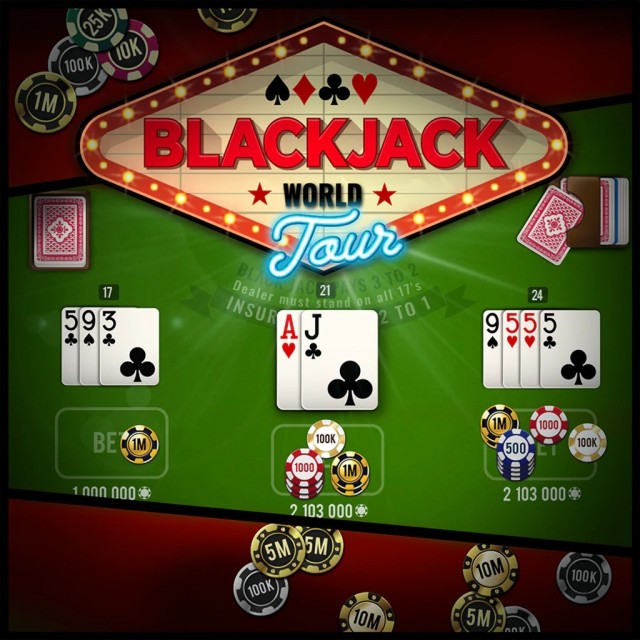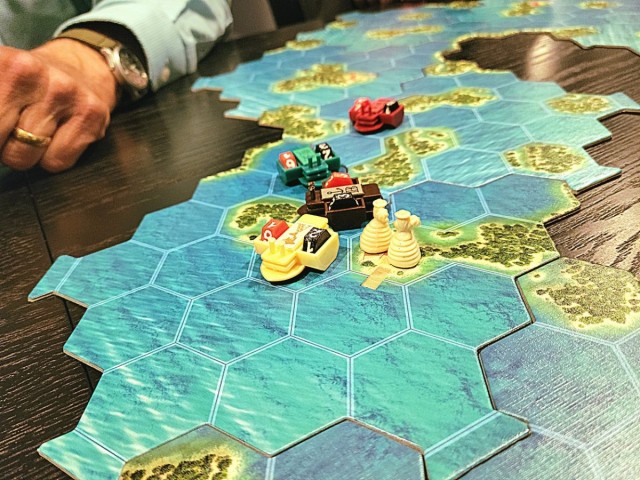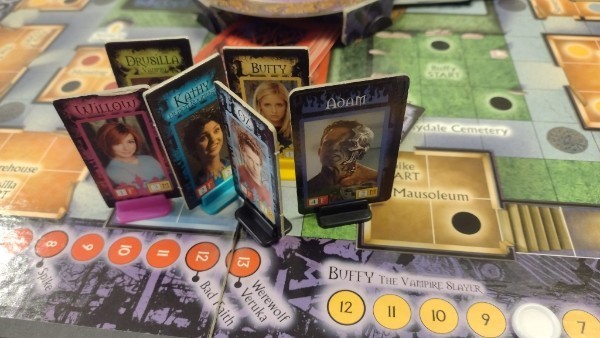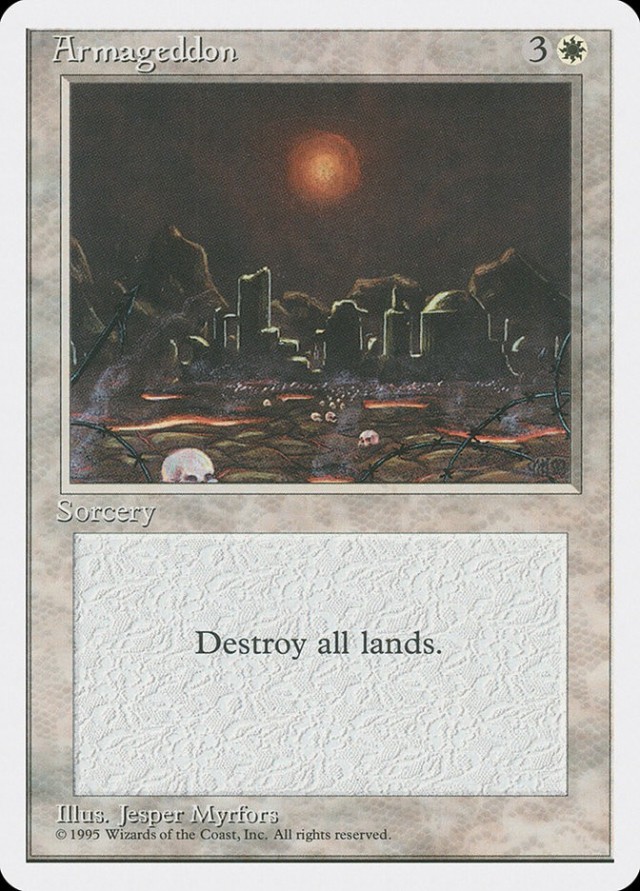It took more than a bit of time to come up with what my Summer Gaming Challenge title would be. There were several on the list that seemed to be in the neighborhood of good choices, but most were games that got plenty of traffic or had gotten recent playtime by me, both of which weren’t in the spirit of this Summer’s challenge. Then I recalled that Bolide had sat for years on my shelf. I recalled a reread of the rules last year (or maybe two years ago now) that had surprised me in their scope, and it certainly isn’t a game you see talked about here or anywhere else to any great amount.

And certainly not to any great accuracy either, for this may be the single most misrepresented game I’ve ever played. Bring up its name and invariably someone will pipe in with “there’s a web site where you can play Bolide, it’s a vector racing game.” I even had the displeasure of having JC Lawrence explain in one of my threads that “given an hour, I can determine the optimal path around any track, at which point the game becomes trivial.” Well isn’t that special. The only problem is that, well, he’s wrong. Mr. Lawrence’s optimal path is going to be rudely interrupted when someone shoves him off of the space he’s claimed on it. I don’t mean take it before he gets there, I mean take his car, move it aside, and take his spot. Bolide’s rules explain exactly how to do that, and it’s very much an important part of the game. This isn't a game with cut-and-dried movement rules.
For those of you unaware how vector racing works I’ll give you a quick synopsis. Fundamentally it’s a way to model how cars work in the real world. Changing your speed or direction takes a bit of time to accomplish. In Bolide your movement this turn affects your movement next turn. You are able to change your speed or direction next turn from what you did this turn, just not very much. This is executed by use of a little pawn that precedes your car. It mirrors your movement this turn, and it defines where you’re allowed to move next turn.

The example above shows the car moving down one spot and three to the right. Your pawn does the same thing from the new position of your car, moving down one spot and three to the right. On your next turn you’re allowed to pick any spot that’s within two of the pawn in any direction, two above, two below, two to the left, two to the right. The result is that you can move to exactly where the pawn is to maintain the exact same speed and direction, or you can adjust your move to make your car pass the pawn by as much as two (accelerating), move short of the pawn (decelerating) or move to one side or the other to change your direction, Generally it’s a combination of these. At the end of the turn your pawn moves to match your car’s movement again, so it recaptures your current speed and direction again, and forces you to deal with whatever that may bring on your next turn. In short, it works the way real cars do – it takes time to change speed or direction and you need to be looking down the road to adjust, especially if the track takes a hard turn in the near future. If you’re not careful you can find yourself forced to move seven spaces in a turn that only offers four.
This is the Bolide that the world thinks they know, and the games you play on the Internet implement Vector Movement very nicely. I’ll be honest, it’s tough to get the hang of, and this is a brain-burning game. Anyone with a couple of beers in them is going to find themselves in the grass in short order. But Bolide only uses Vector Movement as its base. What you won’t find on the Internet is the rest of the rules that Bolide implements, particularly Sharp Braking, Slip Streaming, Boosting and “Engagement” which is a lovely euphemism for barging in and taking someone’s currently held position. You may get to a position first, but that doesn’t mean you’re going to keep it. The last two of these four movement options involve a roll of the dice, and the results can be more than a bit of a crap shoot, resulting in success, failure, damage to either or both vehicles, or the dropping of the yellow flag that could wipe out the carefully crafted lead you’ve been working on for the last half lap. Add to all this the ability to customize your car away from what the other players are using and you have more than a bit of unpredictability built into your pre-calculated optimal path. So in spite of a cold, calculating reputation, Bolide can be quite a ride, whether you want it to be or not.
So game 1 after going years without playing involved a complete reread of the rules last night and then a solo session today to make sure that I had a handle on everything prior to bringing it out with other players. In the past we’ve played with Hard Braking and Slip Streaming, but not using Boosting or Engagement, nor using the chart that allows you to attempt Hard Braking after your tires are completely shot. I wanted to run the whole Megillah in all its glory so that I could both explain the game in detail to start, and offer coaching as the game progressed so that rules would be explained in situ. Two laps of three cars would run me about 90 minutes even with the customized cars and all the rules, especially if the cars stretched out their positions on the track a bit.

Well, that stretch part didn’t happen. The cars I was running managed to stick to each other like glue, constantly vying for the same space. The example above is a prime example. The Red and Green cars had tangled earlier trying to jump off to a quick start with Green trying to steal position away from Red. The cars tapped and spun, leaving both of them a little behind as Blue avoided the scrum and jumped out to a lead. Blue customized for Hard Braking, taking soft tires that would let him jam hard in the turns three times before the pit, with a reinforced undercarriage giving him a fourth. The turn above is quite tight, and Blue’s natural strategy was to go into it wide open, utilizing Hard Braking to ignore his pawn position, dump virtually all speed and simply turn a hard left. That’s what Hard Braking is – ignore your pawn, drop immediately to speed 2 and make any turn that is less than 90 degrees. It allows you to enter a corner at Ludicrous Speed and leave rubber on the track to avoid hitting the wall (or the river in this particular case.) Green, in spite of its Engine Boost tuning and fast tires decided to do the same, using one of its only two Hard Brakes on the tightest turn in the entire track, but there’s a problem, at least from a Vector Movement perspective. The rules only allow a Hard Brake turn of less than 90 degrees, and if green proceeded straight (to the position just above Blue) he can’t turn due south, a very favorable option given the track bending back on itself. Blue would maintain the lead position, meaning Green would waste its Hard Braking maneuver to no particularly good use, especially with Red coming screaming in behind him. So, he did what any self-respecting win-at-all-cost F1 driver would do – he pressed his point in the turn, attempting to dislodge Blue from its damn-near perfect position. A successful move would take the lead, force Blue to move to the left of his current position which would suck with Red coming into the mix soon, and Green would have a nice slice of clear air to take into the upcoming short straightaway. A roll of the 12-sider (result of 3) and a quick review of the Kick-His-Ass-Off-My-Space Table –

. . . shows that Green’s customizations built for speed got taken out of play because he bashed in his side wing against Blue’s car. Blue escaped undamaged and got to keep the position, Green had to settle for falling in behind him, and awful position because he still hadn’t cleared the inside post of the turn.
In this particular case Green had half a dozen choices, including a very aggressive one that could have given him the magical spot in the turn that every car on the track wants to be in. Blue got it first, but wouldn’t necessarily get to keep it. Had Green played more conservatively he could have followed Blue through the turn and looked for an opportunity to pass farther down the road. But that didn’t feel right to me personally for the car on the track most crafted for pressing the throttle. A different roll of the die would have produced a very different result. Blue with his more conservative setup likely would have followed a safer line, preserving his car to avoid a pit stop at the end of the first lap of a two lap race. Avoiding that pit would be a tactical coup, especially in light of a damaged Green and only one other competitor who’s more aggressive design choices would likely invite a pit stop as well.
The odd thing about Bolide is that it manages to be a tight thinking game as well as a press-your-luck-stick-your-buddy kind of game at the same time. I don’t think most people that have heard of it realize that, instead thinking that they know the game without ever having tried it. As in most racing games there’s a bit of luck required to finish in the winner’s circle, but what I found myself thinking about with each move was whether it was “time” yet. Do you make the jump from the slip stream and overboost your engine now, with a tight corner looming just beyond it? Or do you play it safe and stay in the pocket waiting for a better opportunity next turn? This is largely what racing is for the drivers, keeping it tight turn after turn until someone slips just enough to let you exchange positions. Bolide is at times mentally grueling, but so is real racing. A very enjoyable session.
S.
 Games
Games How to resolve AdBlock issue?
How to resolve AdBlock issue? 













